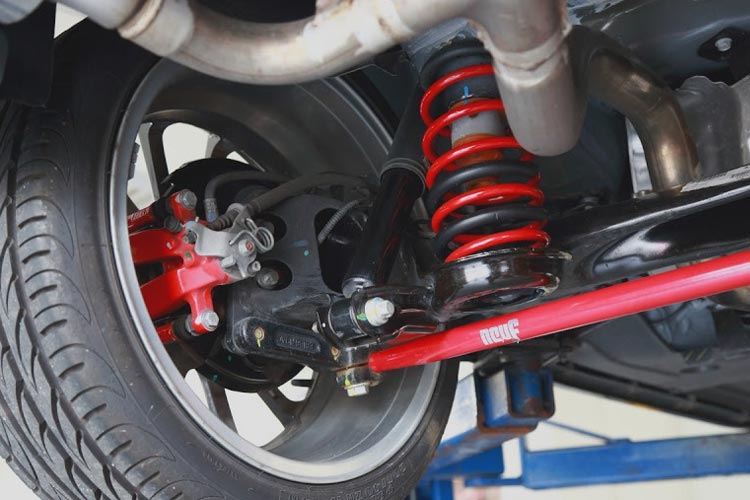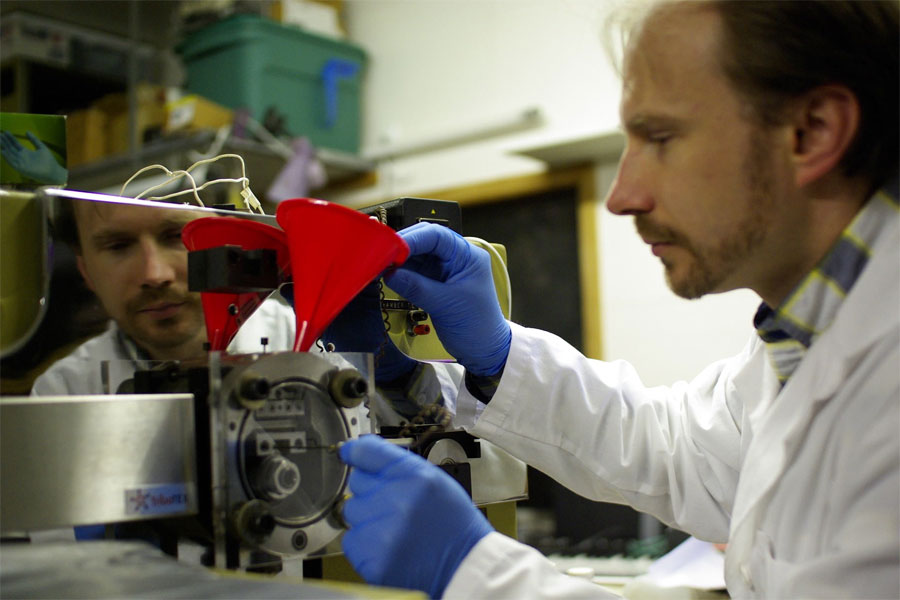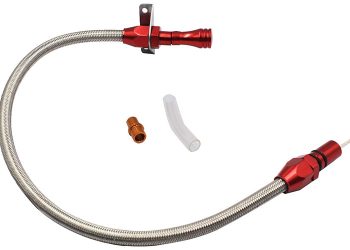Shocks in a car are made to provide a smooth drive. Shocks are also known as Shocks Absorber. Their function is to control the unrequired motion of the springs in the suspension system.
It is called the “dampening” process, in which Shocks slow down the vibration of springs and the vibrations’ intensity. The heat released from the suspension movement turns into heat energy which is later dissolute through hydraulic fluid. Shocks have a piston and oil in them.
When a car rolls over the road, the energy of springs gets transferred to the shocks. Piston contains so many holes in it, which allows the little amount of oil to pass through it. It creates pressure, which slows down the movement of shocks.
Types of Shocks
Even though all the shocks perform the same function, different kinds of suspensions and cars require different shocks.
Here we have the kinds of Shock Absorbers.
Conventional Telescopic Shocks
Conventional telescopic shock absorbers are the simplest kind of shock absorbers. Usually, they are suggested to be replaced rather than repairing. This type of shock can happen in the suspension system of both front and back rears.
They are not really expensive and can be replaced easily.
Strut Type Shocks
Even though they also perform the same function, and struts are made to deal with greater forces and loads. They can mostly be seen in the back and front of small and medium-size cars. Bigger cars tend towards suspension designs based on struts.
Struts are further divided into two categories.
- Sealed Units
As suggested by the name, sealed units are those units, which are supposed to be replaced. Usually, it takes more of the time, energy, and money to repair these. On the other hand, these units are not really expensive. It takes less time to change them instead of wasting time and money on its repairing.
- Repairable Units
Repairable units are those parts of the struts which cost a bit much. The good part is it doesn’t take much time and cost to get them repaired.
Spring Sheet Shock Absorbers
The spring sheet shock absorbers have the characteristics of both struts and shock absorbers. Like struts, spring sheet shock is a damping device and a suspension unit simultaneously. Although, unlike struts, they are not built to be subject to high side loads.
They are made using similar elements to conventional shocks. Spring sheet shock absorbers are also suggested to be replaced instead of replacing them.
What the Signs Are of Worn Shocks and Struts
Most of the drivers tend to rely on their senses when they need to get the car serviced. There are some automobile components, which show warning signs that when the service is required. Here we have four things that are supposed to be observed vigilantly when driving the vehicle.
The Vehicle Bounce
When a car drives over bumps, path holes, and rough roads, that can cause the car dampening. Usually, it happened due to some problem in the coil springs. The struts and shock absorbers help control the springs’ movement so that the car’s wheels do not move up and down unreasonably.
If these components are damaged, stuck, or loose, the wheels lose contact with the road, which results in an uncomfortable and bumpy ride.
The Rear Squats
Struts and shocks have a key role in keeping the car stable during braking and acceleration. When the car’s struts and shocks are damaged, the vehicle’s front part can dive upon braking. On the other side, the rear ends squats during the acceleration.
It usually happens when these components are not durable enough to bear the weight of the car. It is a general perception of any person that new struts and shocks can simply make their ride easier and smooth. The good part is, it can perform a lot more stuff in addition to it.
New struts and shock absorbers can make a car brake and corner like a new car. It gives them better control, stopping distance, and gives more confidence in critical situations.
Signs of Body Roll
Just like how a car may dip and squat during the events of braking and acceleration, the vehicle’s stability may be at risk while turning. It may cause to compromise the vehicle’s stability when cornering. If the jerks are turning to go bad, it will feel like the body is leaning into the turns every time you have to take the turn.
It may be a major safety issue that requires instant action as it can affect steering and brakes’ effectiveness.
Unusual Noises
One of the significant signs of suspension of a system is when you hear unusual noises. As shocks happen, the system loses its ability to support the strut correctly. It causes the struts to bottom out, and once it’s bottomed out, the contact between metals may cause a knocking sound.
That sound derives from the rear or front wheels. Scalloping or tire cupping may also be one of the reasons for the suspension of the system. When the shocks tend to turn bad, that causes the tire to flinch faster.
What are the Signs When Car Requires Suspension Repair?
How to find out when it is time to get your rear suspension repaired? There are usually these reasons you should watch for.
Vehicle Rides Roughly
Most people can tell that their struts and shock absorbers are wearing out. It often happens when a car bounces on every bump that comes across while driving. A rough car ride is a clear sign that your car needs suspension repair.
Pulling or Drifting While Turning
If you have a failing suspension system in the car, it will cause you to pull or drift while you are taking a turn. Basically, it means that the shock absorbers cannot handle the load of the vehicle anymore. It results in increasing the risk of a car’s rollover. If any activity like this is observed, take your car right at that time for repair.
Damaged Shock Absorbers
When you look under the car, have a look at the struts and shocks. If they appear to be oily or greasy, there is a fair possibility that fluid is leaking from them. It is time to get those struts and shocks replaced.
Test the Car Bounce
If you find out that suspension is going bad, try this simple method to test it. The car standing in a car parking, press down the vehicle’s front fully using your body weight. Bounce it for some time and then release.
Do it for few more times on the rear of the car if it continues to bounce or rock more than three to four times after it is released. There are fair chances that suspension is wearing out.
Conclusion
Car shocks and struts are basically one of the essential components of a vehicle. They are supposed to be checked as, at times, it can be threatening to life when something wrong has happened. It is not really challenging to find out if there is some issue with the shocks.
Just a few things that are supposed to be kept in a while driving. Get the shocks repaired or replaced when required to keep yourself safe.














